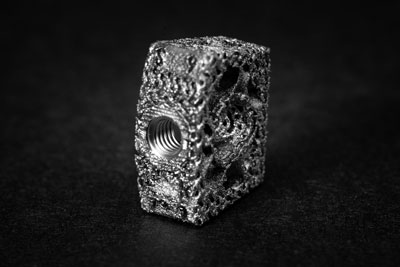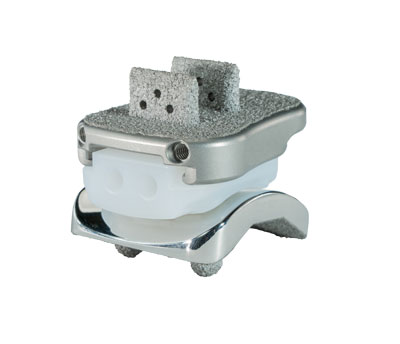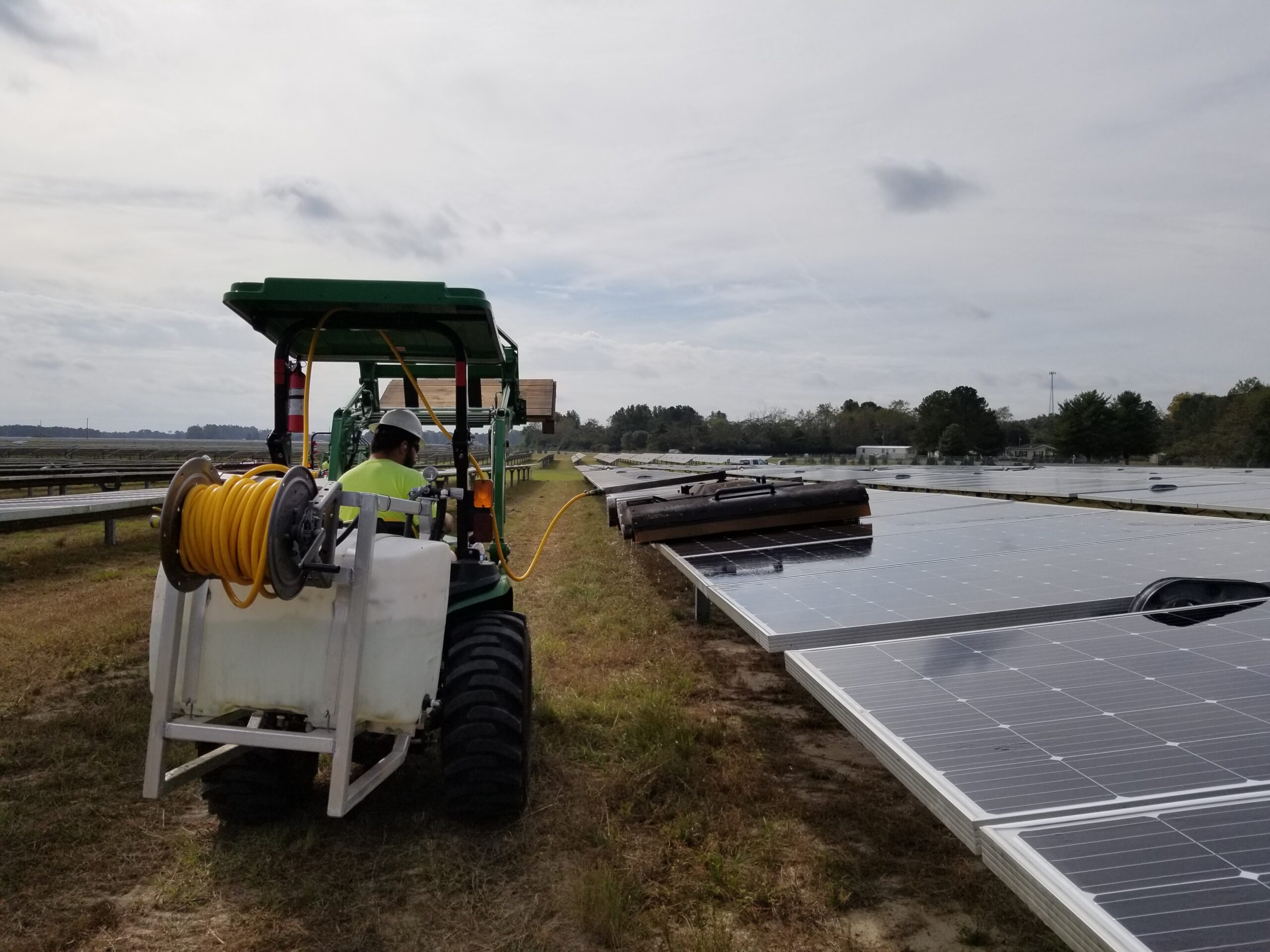Getting Groundbreaking Ideas to Market
David Gorman. Interview by Mridula Mahesh.
How two Pratt Innovators translated their research into startup companies

Duke Engineering research has the potential to change the world. But for these discoveries to have meaningful societal impacts, they must be brought to market intentionally and effectively. Michael Valerinoand Ken Gall are two engineers who know something about bringing Duke-born knowledge into the public sphere.
Ken Gall
Revolutionizing Medical Implants
 Ken Gall founded restor3d, a personalized healthcare startup that develops 3D printed implants. Through additive manufacturing, restor3d produces implants with complex, patient-specific geometries that are higher in strength, quicker to manufacture, and better able to integrate with the human body than the simple, truss-like implants of the past.
Ken Gall founded restor3d, a personalized healthcare startup that develops 3D printed implants. Through additive manufacturing, restor3d produces implants with complex, patient-specific geometries that are higher in strength, quicker to manufacture, and better able to integrate with the human body than the simple, truss-like implants of the past.
Implants developed and manufactured by restor3d are now used in over 300 surgical facilities across the U.S.
These implants are made using direct metal laser sintering (DMLS) printers that solidify titanium alloy powder in thousands of thin layers, building structures from the bottom up. Computerized tomography (CT) images are used to create a computer model of a recipient’s implant area, allowing restor3d to create, in only a few weeks, implants tuned specifically to the patient’s anatomy.
Gall has taught at Duke since 2015, primarily mentoring independent studies and teaching project-based courses in the Departments of Mechanical Engineering and Materials Science and Biomedical Engineering. Between 2015 and 2017, along with post-doctorate Andy Miller and doctorate student Cambre Kelly, he discovered a unique structure using Duke’s metal 3D printer. “We were doing basic research on what was the easiest and strongest structure to print that could best integrate with human bone to connect with a prosthetic limb through a process called osseointegration,” said Gall. “We discovered the gyroid structure as a part of Cambre’s thesis…and that became the beginning of the business on the orthopedic side.”
The development of this structure soon became the Duke-patented TIDAL Technology, which formed the basis of restor3d. “TIDAL Technology is the trade name for our porous structure,” Gall explained. “When we print an implant, we also print porosity, which helps it attach to bone.” According to Gall, the ideal osseointegration properties and high strength-to-weight ratio make TIDAL an incredibly attractive option for medical implants.
“A Kinos Axiom Total Ankle Implant featuring TIDAL Technology can hold several tons,” said Gall. “Your car weighs 2000 to 4000 pounds. So you would be able to stack your car on it, and it would hold.”
Since then, restor3d has also developed and patented NOVO™ Technology, a printer filament that shows up as opaque on x-rays and is used to create disposable test implants. NOVO™ implants are inserted by the surgeon, who is provided with multiple sizes and trials for each procedure to ensure proper fit of the titanium TIDAL™ implant. When restor3d acquired Kinos, a company that matches the complex kinematic profile of a biological ankle, the group was able to combine the Kinos profile with TIDAL™ Technology to create mobile, strong, and highly integrable ankle replacements.
The success restor3d has achieved over the past years can, in a large part, be traced back to Gall’s experience navigating the startup world. Over his career, Gall has co-founded and served on the boards of about a dozen biomedical startups—many of which he is still involved in—allowing him to develop a group of confident investors and avoid the startup pitfalls that plague so many young businesses. “I think this business couldn’t have existed in its current form without the prior experiences,” Gall said. But he also appreciates the optimism that comes with newer team members. “It’s a nice balance, having people that are less experienced and willing to drive forward at all costs, in addition to people that have some experience that can help them avoid all the pitfalls.”
 Michael Valerino
Michael Valerino
Optimizing the Performance of Solar Fields
Michael Valerino is a co-founder and CEO of Solar Unsoiled, a startup dedicated to fighting one of solar energy’s biggest drawbacks: dirty solar panels. When a photovoltaic solar array becomes soiled, the amount of harvestable solar energy decreases, as the dust, pollen, or other matter on top of the panels prevents photons from being “caught,” even in broad daylight. However, this problem isn’t strictly environmental. According to Valerino, “the efficiency losses cause large revenue losses” for solar site owners as well.
Valerino, an environmental engineer, earned both a master’s degree and a PhD from Pratt, but it was during his doctoral studies in the lab of Professor of Civil and Environmental Engineering Mike Bergin that he truly dove into the panel soiling problem. With support from the Duke Energy Initiative, Valerino spent more than six years researching the science of panel soiling efficiency losses and discussing the issue with industry connections and university experts, including Drew Shindell, a faculty member in Duke’s Nicholas School of the Environment. Valerino then realized that he was uniquely positioned to provide the solar industry with a solution for its soiling problem.
Solar Unsoiled uses predictive modeling, data analytics, and satellite imagery to develop optimized panel cleaning schedules on a site-by-site basis.
“We’re taking an approach to analytics that looks at the past, the present, and the future of each site. In that way, what we’re providing is a really comprehensive way to look at this issue…we come up with a customized and proactive scheduling plan for each site,” said Valerino.
This methodology helps solar utilities both understand the impacts of soiling and maximize profit with smarter maintenance spending. Valerino envisions Solar Unsoiled providing optimization services not only for current installations, but also for solar developers before ground is even broken on a new site.
But the journey from ground zero was not easy. “Having knowledge of something and being able to produce a product that solves a challenge are two very different things,” said Valerino. Developing the key optimization software, for example, came only after years of research, networking, and development.
And the challenges didn’t stop there. Valerino had to step back from engineering to learn an entirely new area: entrepreneurship. “The business world moves a lot faster than academia does,” said Valerino. “Every day is different, andinstead of working toward writing a paper, you’re working towards selling a product that customers love.”
Valerino’s selection to the 2022 Cohort of Techstars Alabama EnergyTech Accelerator has helped smooth the learning curve. His participation in the selective, 13-week development program helped him and other energy innovators deepen their entrepreneurial skills, make industry and investor connections, and collaborate with Alabama Power directly on implementation and problem solving.
Though Solar Unsoiled is young—the company launched in early 2022— it shows promise both as a conservation measure and a business venture. And it’s a prime example of Duke research making tangible strides beyond academia.

